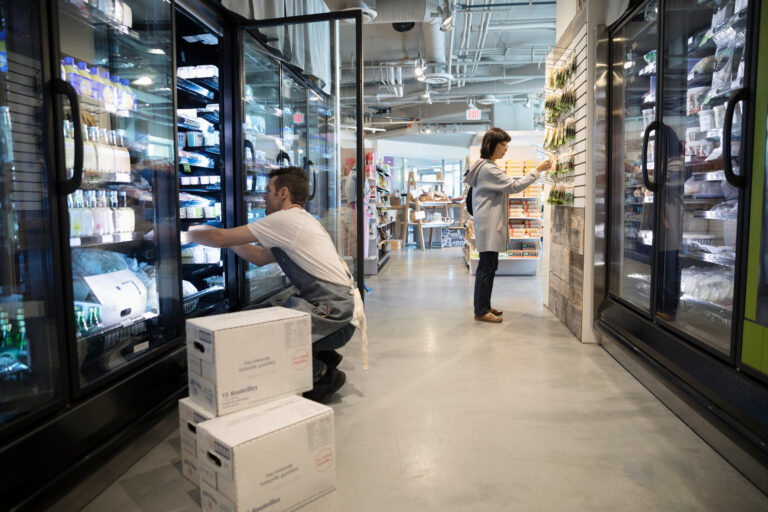As the sales end point of the food supply chain, retailers are not often the initial focus of food safety or quality issues, as most kill steps and interventions are expected to have taken place prior to a food’s packaging and sale. But the continuing occurrence of foodborne illness is causing federal agencies to take a new look at the food safety policies and actions of retailers, as evidenced in the recent Memorandum of Understanding (MOU) between FDA and CDC and FDA’s earlier Retail Food Safety Association Collaboration agreement. Add to that the July consumer coalition report grading top U.S. grocers on their policies to control antibiotic use in their private label meat supplies, and it becomes obvious that this supply end point has become a food safety focal point.
In early October, FDA and CDC announced their signing of an MOU for a partnership to “advance collaborative efforts to reduce the occurrence of foodborne illness risk factors in retail and foodservice establishments.” The agreement encompasses three primary goals:
- Increase the uniformity, consistency, and capacity of state, local, tribal, territorial (SLTT) retail food protection programs. A key factor in achieving this goal will be FDA/CDC working with SLTTs to improve the efficacy of their risk-based inspections and foodborne illness investigations. This is to include assessing their methods, identifying barriers, and coordinating with FDA to implement strategies to overcome barriers. The partners also will apply resources to more efficiently and effectively support retail regulatory programs, including joint training events, presentations, and information sessions for both SLTT retail regulatory officials and industry.
- Promote a culture of food safety and active managerial control (AMC) at retail (with AMC being management’s purposeful incorporation of specific preventive actions or procedures into business operations to control foodborne illness risk factors through monitoring and verification). This focus on food safety culture seems to expand that core element of FDA’s New Era of Smarter Food Safety into retail. Although the New Era blueprint includes a section on Retail Modernization, that section does not discuss the application of food safety culture, nor does the Food Safety Culture section specifically mention retail or foodservice. It appears that that is about to change.
- Maintain strong FDA and CDC workforces to achieve this. With the MOU unable to be achieved without the dedication of resources, it includes the identification of FDA/CDC responsibilities to more efficiently and effectively leverage their resources, share information and work collaboratively, serve as technical resources for each other, and improve their knowledge, skills and abilities. That is, however, somewhat nullified by the caveat that “All activities undertaken through the MOU are subject to the availability of personnel, resources, and funds.”
Prior to this MOU was FDA’s latest update on the cooperative agreement with retail food safety associations which is intended to leveraging the associations’ resources and strengths to “collaboratively advance retail food protection and reduce foodborne illness.” The agreement focuses on reviewing and conducting research on effective and currently used intervention strategies; promoting effective strategies, best practices, and SLTT compliance with the Voluntary National Retail Food Regulatory Program Standards (VNRFRPS) and FDA Food Code; and improving retail foodborne illness outbreak response.
In addition to these regulatory actions, consumer coalitions have increased their retail focus, such as that illustrated by the Superbugs in Stock report. In the report’s ranking of the top 12 U.S. grocery chains and their subsidiaries on their policies to control antibiotic use, no chain received a grade above C, and the majority fell into F. Stating that “most grocery companies lack any meaningful policies requiring their meat and poultry suppliers to eliminate the overuse of antibiotics despite the urgent need to protect human and animal health,” the authors say the report ”demonstrates that the grocery sector has, to date, taken little action to protect the health of their customers, ensure the welfare of animals on supplying farms, or promote more sustainable food systems.”
When all this is combined, it shows a distinct increase in regulatory and consumer group focus on food safety, quality, and preventive action in retail and foodservice environments. While there is understanding that some issues originate in the upstream supply chain, it is imperative that retailers and foodservice not only enforce standards for the food safety programs of their suppliers, but that they implement interventions themselves. Additionally, the inclusion of food safety culture as one of the three primary goals of the MOU brings a new element to retail and foodservice that had seen little to no focus in the past.
From a regulatory perspective, retail and food service entities have been regulated at the local and state level using the Food Code. The Food Code has served public health well over the years and is updated regularly to keep pace with the changing risks. At some point in the future we may see a FSMA equivalent of risk based preventive controls being introduced in the retail and food service sectors but that is not likely to happen anytime soon. But at some point in the future making a version of the food code a federal mandate with FDA oversight is a real possibility.
Although the continuing retail and foodservice labor shortage has been seen to impact food safety as well as overall service and managerial time, neither the federal nor the SLTT regulators will accept that as an excuse for food safety issues or foodborne illness outbreaks. As such, it can be beneficial for establishments to get ahead of the regulators by seeking external assistance for an “extra set of eyes” and expertise in their food safety program or culture assessment, improvement, or implementation.
If you need assistance in any of these areas, give TAG a call. We have expertise in all aspects of food safety, including food safety culture, for the full supply chain, from grower through retail and foodservice.





